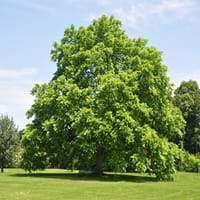Life Span
Perennial
Biennial
Origin
World, Pandemic, North America, Europe, Africa, Asia
North America, United States, Northeastern United States, Mid-Atlantic United States, North-Central United States, Central United States, Canada
Types
Alizes
Bumblebee Deelite
Maui Moonlight
Langport Wren
Sarah Taylor
Titan's Glory
Thornbird
Jane Phillips
Orinoco Flow
Not Available
Number of Varieties
Not Available
Habitat
gardens, Hillside, Riverbanks, Warmer regions, Wet forest
Anthropogenic, Floodplains, Forests
USDA Hardiness Zone
Not Available
3-9
Sunset Zone
Not Available
1a, 1b, 2a, 2b, 3a, 3b, 4, 5, 6, 7, 8, 9, 14, 15, 16, 17
Habit
Clump-Forming
Oval or Rounded
Minimum Height
Not Available
Minimum Width
Not Available
Flower Color
White, Yellow, Blue, Purple, Orange, Pink, Rose, Coral, Peach, Burgundy, Lavender, Plum, Orange Red, Dark Salmon, Bronze, Chocolate, Black
Yellow green
Flower Color Modifier
Bicolor
Bicolor
Fruit Color
Not Available
Green, Brown
Leaf Color in Spring
Not Available
Light Green
Leaf Color in Summer
Not Available
Green, Dark Green
Leaf Color in Fall
Not Available
Yellow, Gold
Leaf Color in Winter
Light Green
Not Available
Leaf Shape
Long Linear
Pinnate
Plant Season
Not Available
Spring, Summer, Fall
Sunlight
Full Sun, Partial Sun
Full Sun
Type of Soil
Clay, Loam, Sand
Clay, Loam
The pH of Soil
Acidic, Neutral, Alkaline
Acidic, Neutral, Alkaline
Soil Drainage
Well drained
Well drained
Bloom Time
Not Available
Late Spring, Early Summer
Tolerances
Drought
Not Available
Where to Plant?
Ground, Pot
Ground
How to Plant?
From Rhizomes, Stem Planting
Seedlings
Plant Maintenance
Medium
Medium
Watering Requirements
Does not require lot of watering, Keep ground moist, Water when soil is dry
Average Water Needs, Do Not over Water, Requires regular watering
In Summer
Lots of watering
Lots of watering
In Spring
Moderate
Moderate
In Winter
Average Water
Average Water
Soil pH
Acidic, Neutral, Alkaline
Acidic, Neutral, Alkaline
Soil Type
Clay, Loam, Sand
Clay, Loam
Soil Drainage Capacity
Well drained
Well drained
Sun Exposure
Full Sun, Partial Sun
Full Sun
Pruning
Remove dead leaves, Remove dead or diseased plant parts, Requires very little pruning
Remove damaged leaves, Remove dead branches, Remove dead leaves
Fertilizers
All-Purpose Liquid Fertilizer
All-Purpose Liquid Fertilizer
Pests and Diseases
Bacterial Diseases, Fungal Diseases, Viruses
Red blotch
Plant Tolerance
Drought
Not Available
Flowers
Yes
Insignificant
Flower Petal Number
Single
Not Available
Fragrant Leaf
No
Not Available
Fragrant Bark/Stem
No
Not Available
Foliage Texture
Medium
Coarse
Foliage Sheen
Matte
Matte
Attracts
Bees, Butterflies
Birds, Squirrels
Allergy
Asthma
Gastric, Pollen
Aesthetic Uses
Beautification, Showy Purposes
Not Used For Aesthetic Purpose
Beauty Benefits
Not Available
Good for skin
Environmental Uses
Air purification
Air purification, Shadow Tree
Medicinal Uses
No Medicinal Use
Dysentry, Intestinal irritations, Small pox, Stomach pain
Part of Plant Used
Flowers, Leaves, Rhizomes, Root
Sap, Seeds
Other Uses
Making Perfumes, Oil is used for aromatherapy, Used as a sedative, Used as essential oil
Application in Furniture, Decorative veneers, flooring, paneling, Herbicide
Used As Indoor Plant
No
No
Used As Outdoor Plant
Yes
Yes
Garden Design
Bedding Plant, Cutflower, Mixed Border, Rock Garden, Wall
Edible, Shade Trees
Botanical Name
IRIS
JUGLANS cinerea
Common Name
Iris
Butternut
In Hindi
Iris
Butternut Tree
In German
Iris
Butternut Baum
In French
Iris
noyer cendré
In Spanish
Iris
árbol de nogal
In Greek
Ίρις
Butternut Δέντρο
In Portuguese
Íris
Árvore Butternut
In Polish
Irys
butternut Drzewo
In Latin
Iris
Butternut ligno
Phylum
Tracheophyta
Magnoliophyta
Class
Liliopsida
Magnoliopsida
Order
Asparagales
Juglandales
Family
Iridaceae
Juglandaceae
Clade
Angiosperms, Monocots
Angiosperms, Eudicots, Rosids
Tribe
Irideae
Not Available
Subfamily
Iridoideae
Not Available
Number of Species
Not Available
Season and Care of Iris and Butternut Tree
Season and care of Iris and Butternut Tree is important to know. While considering everything about Iris and Butternut Tree Care, growing season is an essential factor. Iris season is Not Available and Butternut Tree season is Not Available. The type of soil for Iris is Clay, Loam, Sand and for Butternut Tree is Clay, Loam while the PH of soil for Iris is Acidic, Neutral, Alkaline and for Butternut Tree is Acidic, Neutral, Alkaline.
Iris and Butternut Tree Physical Information
Iris and Butternut Tree physical information is very important for comparison. Iris height is Not Available and width Not Available whereas Butternut Tree height is 1,220.00 cm and width 1,220.00 cm. The color specification of Iris and Butternut Tree are as follows:
Iris flower color: White, Yellow, Blue, Purple, Orange, Pink, Rose, Coral, Peach, Burgundy, Lavender, Plum, Orange Red, Dark Salmon, Bronze, Chocolate and Black
Iris leaf color: Not Available
Butternut Tree flower color: Yellow green
- Butternut Tree leaf color: Light Green
Care of Iris and Butternut Tree
Care of Iris and Butternut Tree include pruning, fertilizers, watering etc. Iris pruning is done Remove dead leaves, Remove dead or diseased plant parts and Requires very little pruning and Butternut Tree pruning is done Remove damaged leaves, Remove dead branches and Remove dead leaves. In summer Iris needs Lots of watering and in winter, it needs Average Water. Whereas, in summer Butternut Tree needs Lots of watering and in winter, it needs Average Water.





